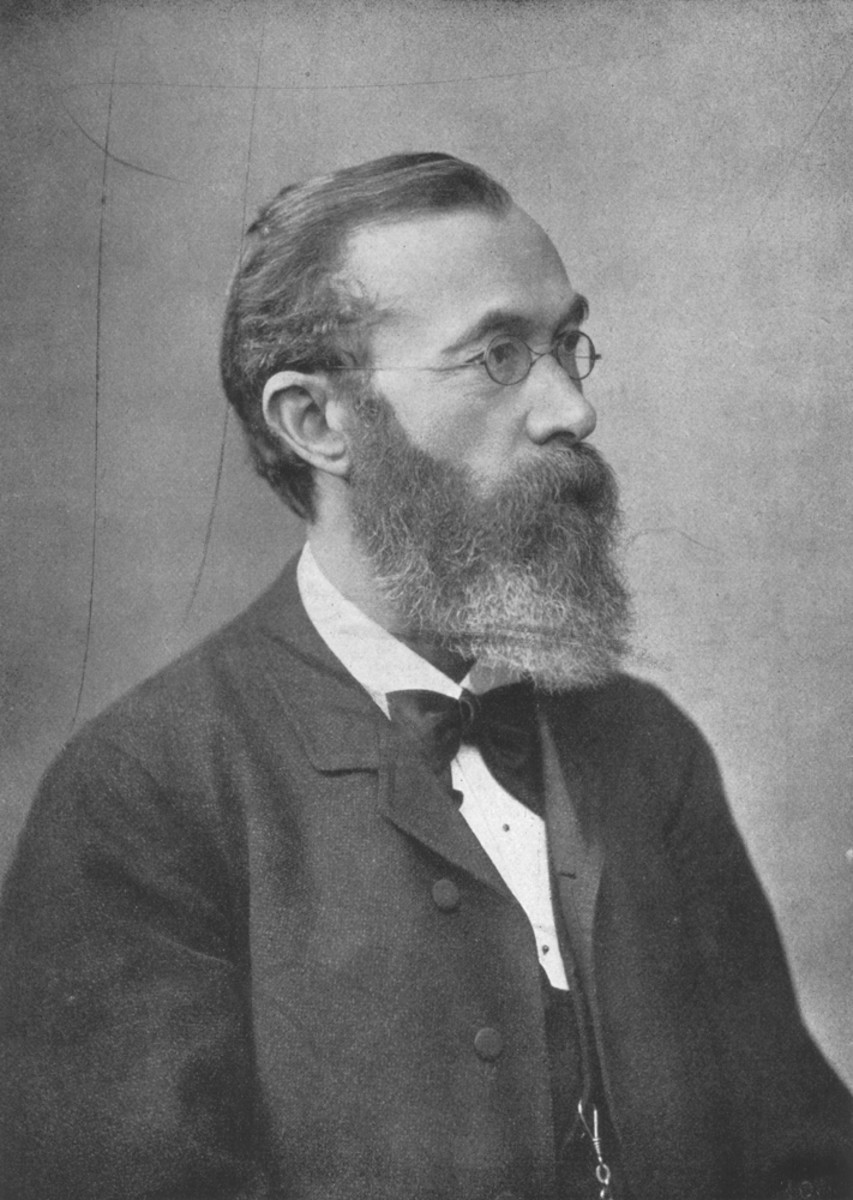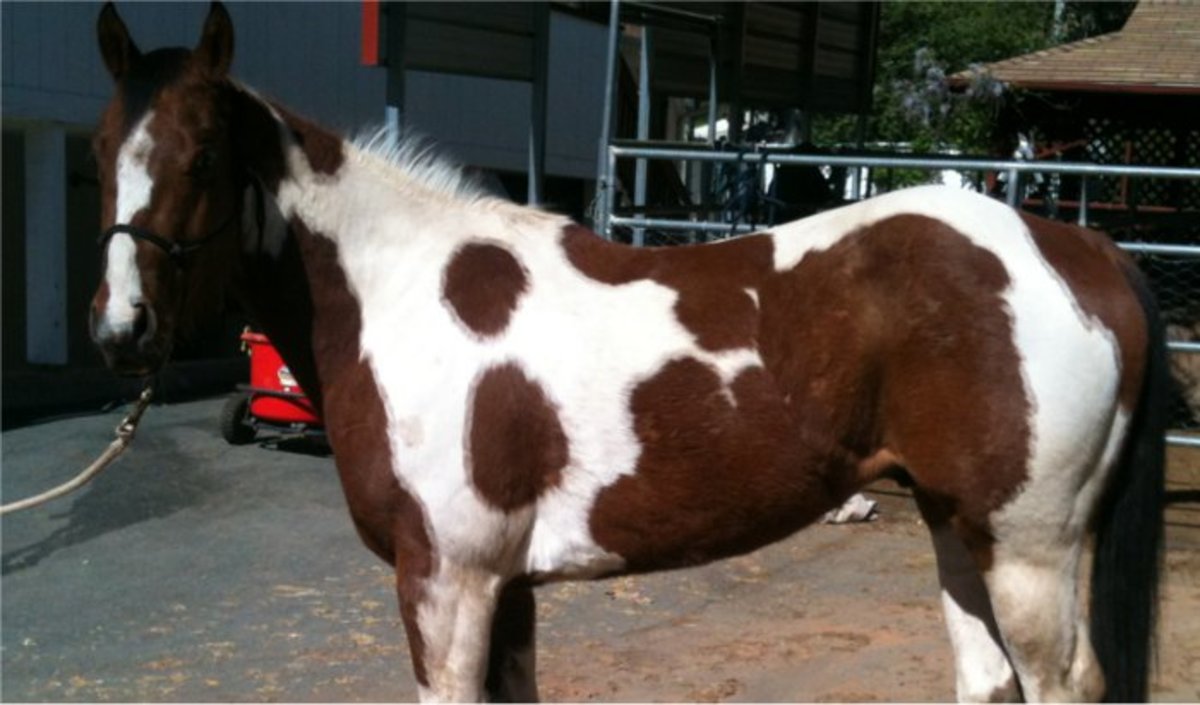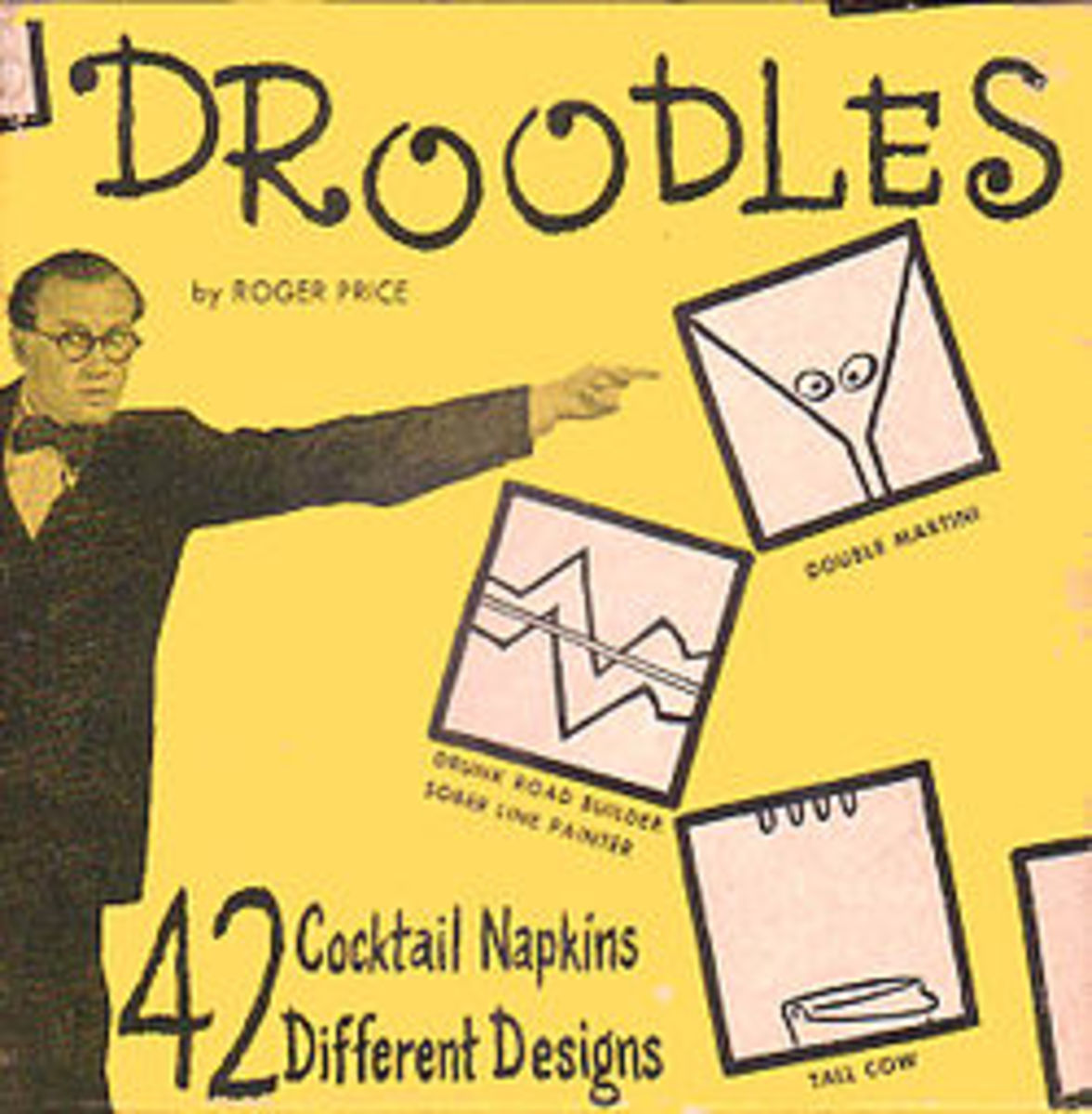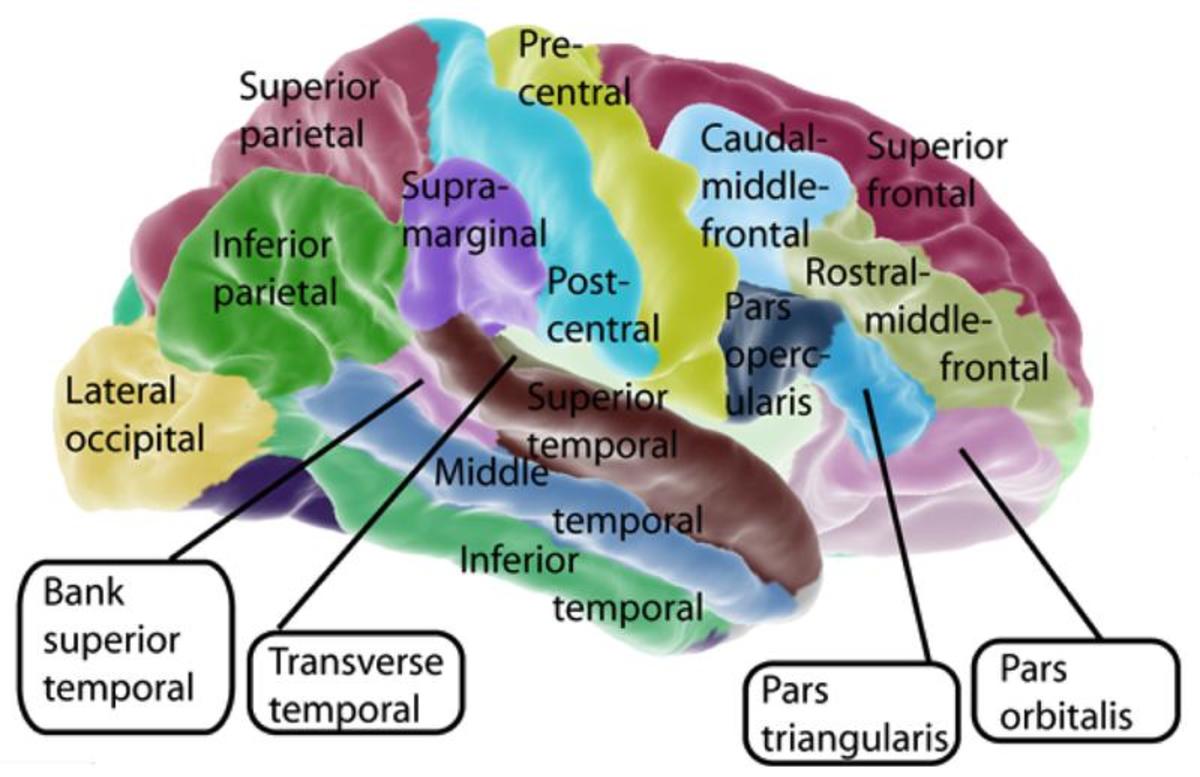The Amazing Horse Who Could Count
That's me, Clever Hans, on the left.
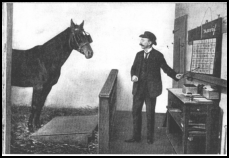
The story of Clever Hans
You have probably heard of Clever Hans, the amazing horse who could count, but did you know that in addition to solving math problems, the horse could identify people, tell the time, the day of the week, and calculate the square roots of numbers? Personally, I have no difficulty – yet – with the first three but I need my calculator for the fourth.
How did this come about? I’m happy to answer my rhetorical question. Here is some history.
The teacher. Wilhelm von Osten was a retired high school mathematics teacher who believed that animals were as intelligent as humans and could be taught. He tried to teach a cat and a bear and a horse to do simple math. The cat was indifferent, the bear was irritated, but the horse, Hans, was a brilliant student. Hans was an Arabian stallion from Russia that Wilhelm began teaching in Elberfeld, Germany in the year 1891.
The method. Wilhelm taught Hans to count skittles – those are like bowling pins – by striking with his hoof, Hans’ hoof, not Wilhelm’s, as many times as there were skittles on the table. If there were three skittles, Hans would paw at the ground with his hoof three times. At first, Wilhem pronounced the numbers out loud. Later he wrote them on a blackboard. Soon he added the alphabet with An equal to one tap of the hoof, B equal to two taps, etc. Soon Hans graduated to more complicated operations and earned the appellation of Clever Hans (Kluge Hans in German). True - Hans was not correct 100% of the time but he was correct so often that his intellectual ability required investigation.
The testing. Many tests of Hans took place and one individual claimed that the horse had the intellect of a 14-year old – perhaps a dubious distinction. But the first genuine scientific testing was done by Professor Carl Stumpf in 1904. That year Wilhelm had invited cavalry officers to witness the intellectual feats of Clever Hans – without charge. A writer for the New York Times also attended (see the subsequent column he wrote below).*
As a result of the publicity a committee of eminent scientists headed by Prof. Stumpf, director of the Institute of Psychology at Berlin University, tested Clever Hans and pronounced no trickery was involved – Clever Hans was indeed clever. Stumpf searched for evidence of cheating or deception but found none to explain Hans’ amazing ability. He endorsed Clever Hans as genuine – the real deal. Hans soon became a celebrity and people stood in line to witness his demonstrations. I can’t help but wonder if there were vendors peddling Clever Hans toy horses, mugs and other equine paraphernalia to the masses.
The re-testing. Some scientists were still skeptical. One of these was Oskar Pfungst, a protégé of Stumpf (guess it helped to have a “pf” in your name) who assembled a group of thirteen researchers known as the “Hans Commission.” They tested Hans inside a large tent to avoid the distraction of numerous spectators. No evidence of trickery was found but they did find the answer to the Clever Hans phenomenon.
The testing began by using numbered flash cards that Clever Hans was familiar with. Wilhelm, his owner, saw each number before Hans did and Hans continued being clever. Then Pfungst asked Wilhelm to show Hans the cards without first looking at them himself. Now Hans’ answers became random and incorrect. What happened?
Pfungst was no pfool. He pfigured out the pfacts in a pflash. (Sorry, I got carried away). Somehow Wilhelm was giving the answers to Hans. His hypothesis was confirmed when Pfungst asked Wilhelm to stand behind Hans where the horse could not see him and again ask him to count. Again Hans failed the test. Somehow he was finding the correct answers by looking at his questioner.
Carefully observing the owner, Pfungst noted the unconscious physical cues – the non-verbal language – that was being read by Clever Hans. The owner or any other questioner would change posture subtly as Hans’ hoof-tapping was expected to begin. Then the body language would change again as the correct answer was approached.
The Conclusion. Clever Hans was an extremely clever horse with the ability to pick up non-verbal cues but he was not a mathematician. He was providing correct answers by responding to visual cues. The psychologists realized that an animal’s or a human’s behavior can be influenced by subtle, unintentional non-verbal cues on the part of a questioner. This effect has come to be known as the “Clever Hans effect”. For further information, read this book: Oskar Pfungst: Clever Hans (The Horse of Mr. Von Osten): A Contribution to Experimental Animal and Human Psychology. New York, 1911. Reprint, New York: Holt, Rinehart & Winston, 1965.
Epilogue. Wilhelm von Osten became irritable and reclusive, convinced that his reputation and his life’s work had been defamed and destroyed. In a newspaper article in August, 1904 he is quoted: “In spite of everything one can hardly see in these experiments (the tests of Hans) more than a kind of scholarly jest which has no special value for science or practical life.” He died in 1909.
What happened to Clever Hans? He became the property of Karl Krall, a jeweler in Elberfeld who wanted to continue von Osten’s work and disprove the non-verbal signals theory. Krall owned stables in nearby Wuppertal and taught four more horses there: Muhamed, Zarif, Berto and Hanschen. The latter was blind and unable to see visual signals but learned to calculate as rapidly as the other horses.
Krall’s horses answered math questions by stamping with their hooves as Clever Hans had, but in a slightly different fashion. To give the number 34, for example, they struck the ground three times with the left hoof and four times with the right hoof.
A story is told about the renowned author, Maurice Maeterlinck, who visited Krall. After learning’ his name, the horse, Muhamed, spelled it out phonetically with his hooves. (I would have trouble spelling it, too). The horse also refused to give the square root of a chance number which was found afterward to have none, and even expressed thoughts by spelling. On one occasion, Muhamed complained that “the groom had struck Hanschen,” a fellow horse-mate.
Can we discount the experience of Maeterlinck and other distinguished scientists who confirmed that Krall’s horses could correctly answer questions when the answer was not even known to the questioner? Then the "unconscious signaling" theory of Pfungst must be considered unproved. His own detailed experiments with Clever Hans and other animals, although consistent in results, probably proved what he expected them to prove – the self-fulfilling prophecy at work – and so can not be considered impartial.
* Berlin’s Wonderful Horse. He Can Do Almost Everything but Talk. How He Was Taught.
Special Correspondence The New York Times. Berlin, Aug, 23, 1904
"In an out-of-the-way part of the German capital, a horse is now shown which has stirred up the scientific, military, and sporting world of the Fatherland. It should be said at the very outset that the facts in this article are not drawn from the imagination, but are based upon true observations and can be verified by Dr. Studt, Prussian Minister of Education; by the famous zoologist, Prof. Moebius, director of the Prussian Natural History Museum, and by other eminent scientific and military authorities. I had occasion today to see a performance of the animal which was given in the presence of the young Duke of Sachse-Coburg-Gotha.
"Hans, the wonderful stallion, is nine years old and is the property of a Herr von Osten, a retired school teacher. The horse has never been used for riding or driving. For over four years Herr von Osten has given the animal systematic instruction such as he would give to a child. The industrious pedagogue is the owner of a tenement house in the northern part of Berlin, and there he lives. The animal is quartered in a small shed adjoining a court where he is shown.
"Some years ago the neighborhood was astonished by observing the training which Herr von Osten gave his animal. They beheld him and Hans at a certain hour of the day standing in the court before a blackboard and counting machine. Herr von Osten, undismayed by ridicule (for by his method he had gained the reputation of being an old crank), instructed the stallion by showing him the balls on the machine, and influencing him to indicate a number by stamping down his right hoof. At the same time, while the horse was doing this, his instructor spoke the name of the number. Then every time Hans put down his foot correctly he would be rewarded by a carrot or a piece of sugar. All other things the intelligent animal learned by seeing certain objects and at the same time hearing their names. In this way words to him became signs for visible objects, and he used footsteps for his perceptions, according to the same psychic laws as we use a language to make others understand.
"After Herr von Osten had taught Hans this simple sign language, the foundation for further education was established. He put before him gold, silver, and copper coins, and taught him to indicate gold pieces by one movement of the foot, silver with two, and copper with three steps. When, for example, three coins were placed in a row, Hans stamped down his foot three times when asked the number. He is also able to distinguish coins according to signs. When asked to give the value of a one-mark piece touched by his teacher, he moves his foot once, for a two-mark piece, twice, etc.
"Hans is an expert in numbers, even being able to figure fractions. He answers correctly the number of 4s in 8, in 16, in 30, etc. When asked how many 3s there are in 7 he stamps down his foot twice and for the fraction once. Then when 5 and 9 are written under each other on the blackboard and he is asked to add the sum, he answers correctly.
"Hans is also capable of distinguishing persons. He told the number of girls and officers standing in a line. A remarkable thing happened yesterday. An officer was pointed out, and Hans was told, “That is Count Dohna.” Half an hour later the same man was pointed out to him, and when asked for his name the horse picked out the letters D-o-h-n-a from the blackboard. In the same manner today Hans was introduced to the Prince of Sachse-Coburg-Gotha and also gave his name correctly.
"The versatility of Hans in other directions is astonishing. He can distinguish between straw and felt hats, between canes and umbrellas. He knows the different colors. One beholds several colored rags fastened on a string. A cavalry officer places himself before the horse and Hans is asked to state the color of his cap. The horse answers by stamping his foot down three times, the color of the third rag, which like the cap is red.
"Hans has also been taught to distinguish tones. The various tones of the musical scale are numbered and he recognizes their position by his usual method. Hans can tell the time on a watch and can indicate the exact hour. At the test yesterday he recognized persons from photographs. Herr von Osten placed persons in a row who had given him their photographs, then put the picture before the horse and asked him to indicate the position of the person in the line. Again Hans recognized the gentleman in civilian clothes who the day before had been introduced to him in uniform. He knows the names of the months and indicates the day of the week by putting down his foot, Sunday once, Monday twice, etc.
"Prof. Moebius, the eminent zoologist, has this to say about Hans: “He possesses the ability to see sharply, to distinguish mental impressions from each other, to retain them in his memory, and to utter them by his hoof language. Of course, not by himself has he learned all this, but by methodical instruction of a human intelligence … for wild horses, not trained in the same manner utilize their physical and psychic faculties as does Hans to satisfy their desire for food.
"Herr von Osten has succeeded in training Hans by cultivating in him a desire for delicacies. This desire is aroused by questions and finger signs, according to which the stallion acts, in order to satisfy his aroused desire, for as soon as he puts his foot down he snaps for the delicacy in the hand of his master. I doubt whether the horse really takes pleasure in his studies. He follows entirely mental impressions which he receives from the surroundings and which satisfy his wants.”
"Hans is the second horse Herr von Osten has trained. He claims that any horse of fair intelligence can be so taught. Herr von Osten’s training is done purely from a scientific standpoint, and he told me that he really regretted the premature publicity given to his work. By the time this article is in print, the Kaiser who has heard with interest of this horse prodigy, will have seen the animal. – Edward T. Heyn
© Copyright BJ Rakow 2011. All rights reserved.

\B. J. Rakow Ph.D., Author, Much of What You Know about Job Search Just Ain't So." An enlightening book about job search with dynamic facts about interviewing, negotiating, networking, and creating a powerful resume.

